Charlotte the virgin stingray breeds something more than just babies, her keepers reveal
Charlotte the Stingray, who has gained a fanatical following since she apparently got pregnant all on her own, is undergoing a new change in her body.
The ‘virgin’ stingray is regrowing her fallen tail barb, according to the latest update from the North Carolina-based aquarium science team that cares for her.
Team ECCO’s Aquarium & Shark Lab shared a new video on their Instagram and Facebook pages explaining that this is a normal process for stingrays, and it shows that she is in good health
The announcement comes amid curiosity, concern and even conspiracies about Charlotte’s solo pregnancy — which some observers say is taking longer than it should.
Charlotte the stingray can be seen swimming around her aquarium in the latest announcement from the Aquarium & Shark Lab by Team ECCO.
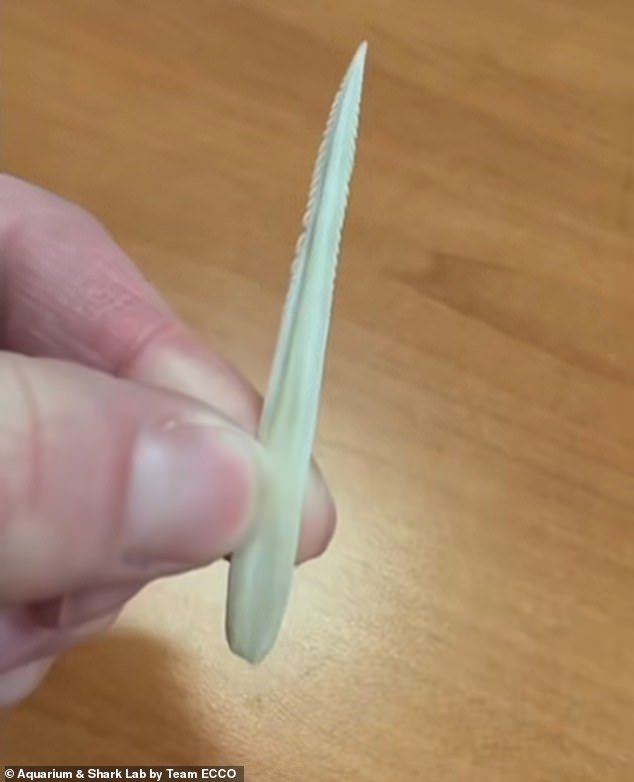
This is the barb Charlotte dropped in late February. Stingrays use their barbs for defense.
Uncertainty remains surrounding her pregnancy, including when exactly it started and when she will give birth.
But this news suggests that Charlotte’s body continues to perform its healthy habits as expected during an otherwise strange time.
Team ECCO did not respond to DailyMail.com’s multiple requests for comment on Charlotte’s condition.
‘Charlotte has been living with us for eight years. During this period she dropped her barb several times,” the narrator continued the new video.
‘Every time she has grown a new one. The last barb drop was on February 28, 2024,” she said. ‘Charlotte is currently busy re-growing a new barb, which we see as a sign of health and prosperity in her environment.
The announcement seems intended to reassure the public, but as with previous updates, it is has done little to allay suspicions among some observers.
It contains no new information about her pregnancy, especially the health of her developing puppies.
And just like before, in the absence of details, rumors continue to circulate.
Charlotte became the center of a media frenzy in February when Team ECCO announced that she was pregnant – despite not living near male stingrays.
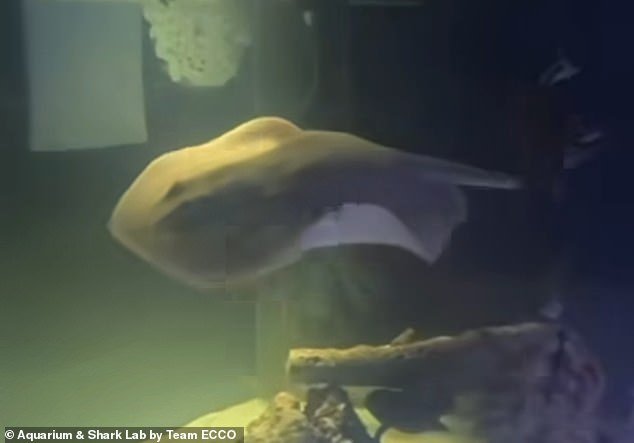
Charlotte continues to swim around her tank as usual at the aquarium in Hendersonville, North Carolina. And her caregivers still don’t know when she will give birth.
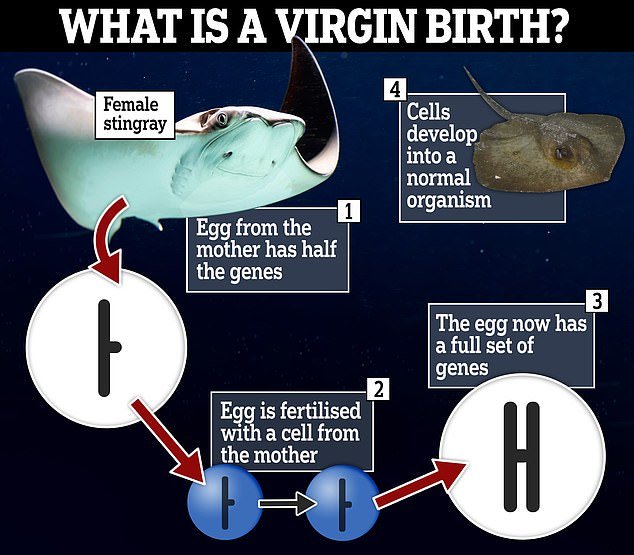
Certain animals can reproduce through ‘facultative parthenogenesis’, where the egg is fertilized with cells from the mother rather than by a male.
The aquarium staff suspects that she became pregnant through an unusual event called “parthenogenesis.”
Parthenogenesis is the term for an animal that essentially fertilizes itself, using her own eggs to create a genetically complete clone in the absence of males of her species.
It has not yet been confirmed that parthenogenesis is the cause of her apparent virgin birth, but it is the most likely explanation, as she has not seen a male of her species in almost ten years.
Parthenogenesis is relatively common in sharks and rays, which belong to the same subclass of fish, called elasmobranchs.
But before Charlotte it had not been observed in a round stingray like her.
It is the first documented case of parthenogenesis observed in captivity.
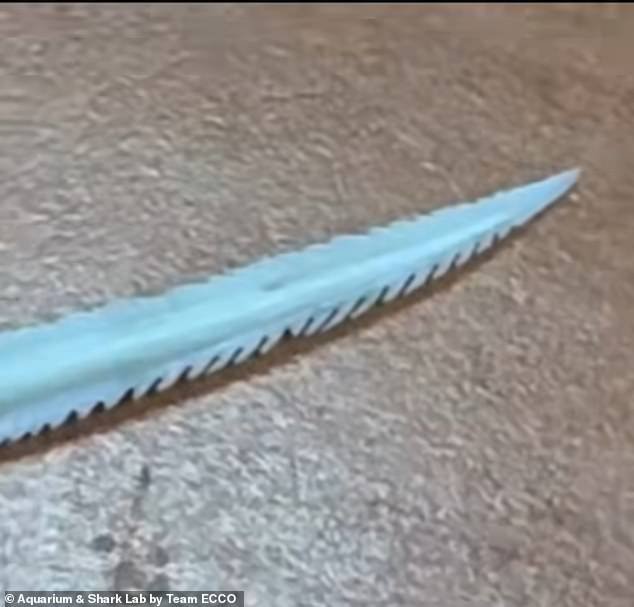
Barbs, which stingrays use for defense, are extremely sharp. When a stingray stings you with its barbs, the pain is intense.
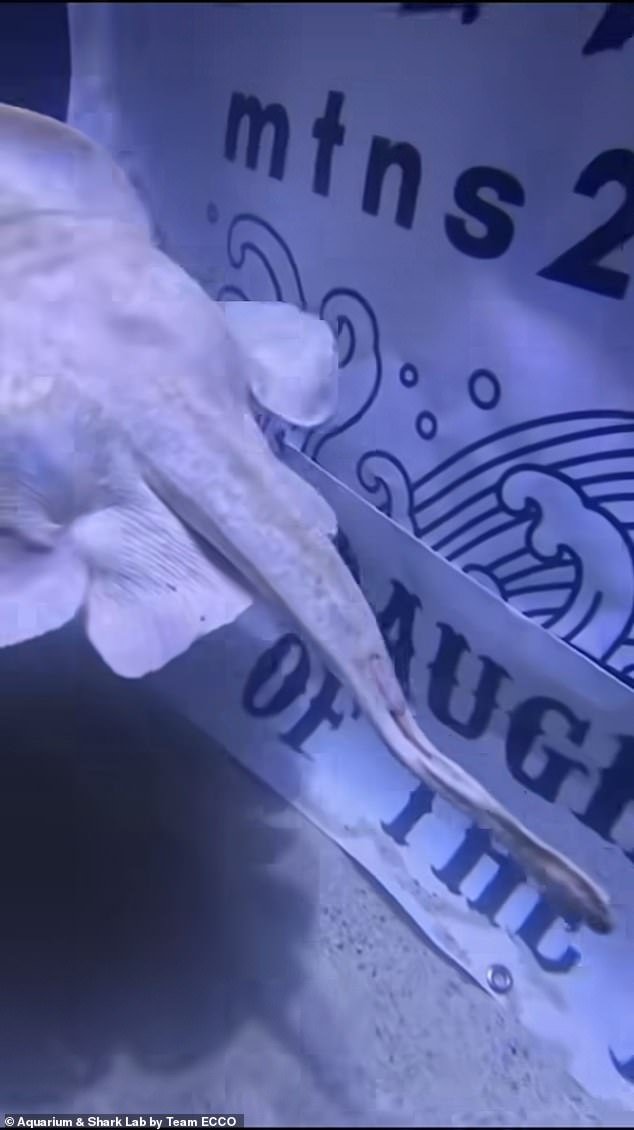
A stingray’s barb is located about halfway down the tail, at the slit shown here. It usually stays collapsed and out of the way.
It normally takes three to four months for a stingray to give birth after they become pregnant, but there is no road map for what happens to Charlotte.
The extraordinary length of her pregnancy worried some observers, who suggested something may have been wrong.
“Are you sure it’s not a tumor right now?” one Instagram commenter asked.
Others have become more conspiratorial.
‘I have no idea how or who to contact. Can someone please inform the authorities about this? At this point there is neglect, abuse or fraud. They didn’t even have a legitimate vet look at her,” said one Facebook commenter.
But according to Team ECCO, Charlotte is still doing excellently.
“Charlotte’s behavior, resting, and eating patterns have not changed since our last update,” the video narrator said in the latest update.
